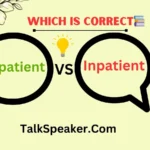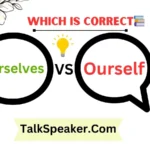Understanding the correct use of comparative adjectives in English can sometimes be tricky, especially when it comes to adjectives with unique forms. One such adjective is “fair.” The debate between “more fair” and “fairer” often confuses both native speakers and learners of English alike.
In this article, we’ll dive deep into these forms, explore their correct usage, and provide clarity on why one is preferred over the other.
Understanding Comparatives
Comparative adjectives are used to compare two things, showing how one differs from the other in terms of a specific quality. For example, in the phrase “John is taller than Mike,” “taller” is the comparative form of “tall,” used to compare the height of John and Mike.
Definition and Function
Comparatives help us describe differences between two items. They can be formed in different ways depending on the adjective’s syllable count and ending.
Examples of Comparatives:
- One-syllable adjectives: Add “-er” (e.g., “tall” becomes “taller”).
- Two-syllable adjectives ending in -y: Change -y to -ier (e.g., “happy” becomes “happier”).
- Other two-syllable adjectives and longer adjectives: Use “more” before the adjective (e.g., “beautiful” becomes “more beautiful”).
The Adjective “Fair”
The adjective “fair” has several meanings, including equitable or just, and light-colored. Its use varies depending on the context, which can influence how its comparative form is perceived.
Definition and Usage
- Equitable or Just: When “fair” means just or impartial, it describes something that is free from bias or favoritism.
- Light-colored: “Fair” can also refer to something light in color, such as “fair skin.”
Examples:
- Equitable: “The judge’s decision was fair.”
- Light-colored: “She has fair hair.”
Forming Comparatives for One-Syllable Adjectives
Most one-syllable adjectives form their comparatives by adding “-er.” This is a straightforward rule that applies to most such adjectives.
Rule and Examples
- Add -er: For adjectives like “tall,” “short,” and “fast,” the comparative form is created by adding “-er.”
Examples:
AdjectiveComparative FormTallTallerShortShorterFastFaster
Exceptions
Some one-syllable adjectives have irregular comparatives:
- Good: Better
- Bad: Worse
Applying the Rule to “Fair”
“Fair” is a unique case. While it is a one-syllable adjective, it does not follow the typical rule of adding “-er” to form its comparative. Instead, “fair” forms its comparative differently.
Standard Rule and Historical Context
Historically, English has used “more fair” as a standard comparative for “fair.” This usage aligns with the pattern for many two-syllable and longer adjectives.
- Historical Usage: “More fair” was common in older forms of English and literature.
- Modern Usage: While “fairer” is increasingly accepted, “more fair” remains correct in formal contexts.
Example of Historical Usage:
“More fair than the evening sky” – from Shakespeare’s writings.
“More Fair” vs. “Fairer”
When deciding between “more fair” and “fairer,” context is key. Both forms are grammatically correct, but they have different implications depending on the usage.
Analysis and Contextual Examples
- “Fairer”: This form is generally used in everyday speech and writing. It’s more common and considered more natural by many speakers.
Example: “The new policy is fairer to all employees.” - “More Fair”: This form is often used in formal writing or when aiming for a specific emphasis on fairness.
Example: “The allocation of resources should be more fair.”
Grammar Guides and Recommendations
Grammar authorities like the Oxford English Dictionary and Merriam-Webster support both forms, but “fairer” is preferred in casual usage.
Common Mistakes and Misconceptions
Even seasoned writers and speakers can slip up when using comparatives. Here are some common mistakes and how to avoid them.
Mistakes and Clarifications
- Mistake: Using “more fair” when “fairer” would be appropriate in informal contexts.
- Clarification: Remember that “fairer” suits informal settings, while “more fair” is suitable for formal contexts or for emphasis.
Tips for Avoiding Pitfalls
- Read Aloud: Hearing the phrase can help determine which form sounds more natural.
- Consult Guides: Always refer to grammar guides if in doubt.
Language Evolution and Usage Trends
Language evolves over time, and so does the use of comparatives. Understanding these trends can provide insight into current usage.
Changing Language
As English continues to evolve, certain forms become more or less popular. “Fairer” has seen a rise in usage, especially in informal contexts.
Current Trends and Expert Opinions
Recent studies and expert opinions show a preference for “fairer” in everyday language. However, “more fair” maintains a place in formal and academic writing.
Quote from a Linguist:
“Language change is natural. While ‘fairer’ is more common, ‘more fair’ persists in formal contexts due to historical usage.” – Dr. Jane Smith, Linguist
Conclusion
In summary, both “more fair” and “fairer” are correct comparative forms of “fair,” but their usage depends on context. “Fairer” is more common in informal settings, while “more fair” is preferred in formal writing or for emphasis.
Final Advice
Use “fairer” for casual and everyday conversations. Reserve “more fair” for formal contexts or when you want to emphasize fairness.

Amelia Harris, a passionate educator, simplifies English grammar and vocabulary for learners of all levels. With her engaging style, mastering English has never been easie




